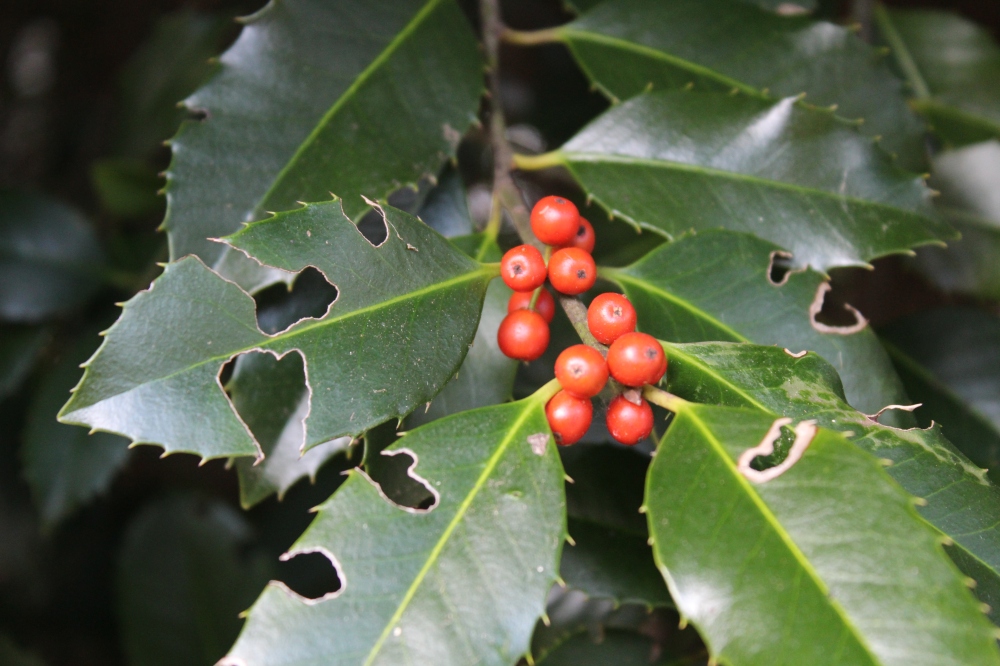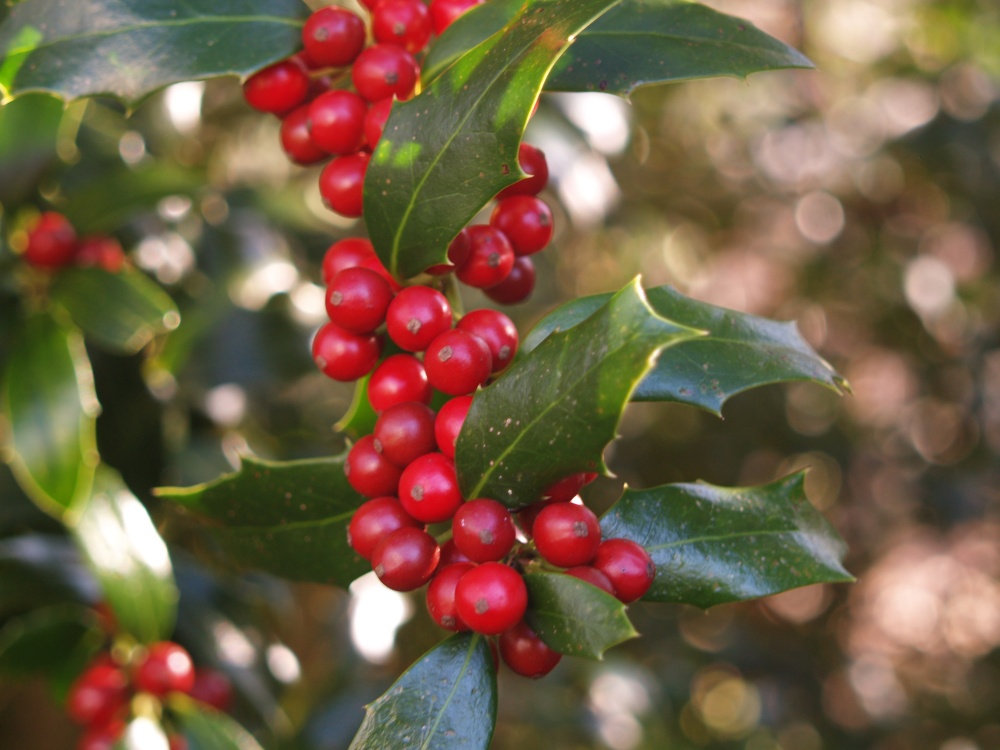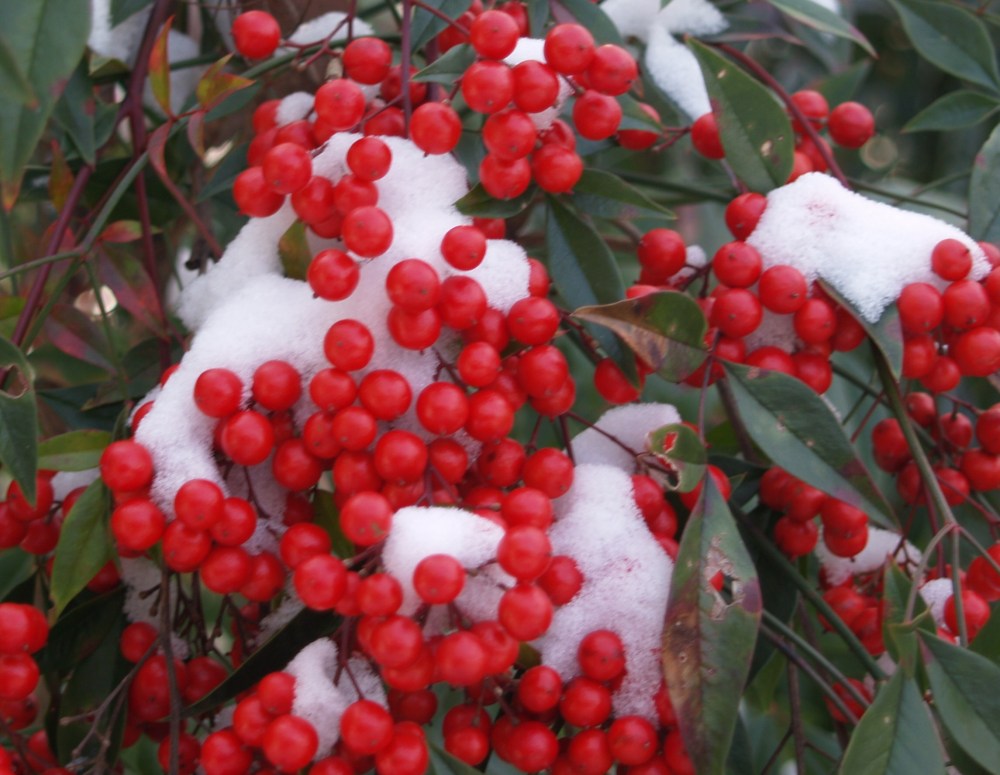Every day in the garden, there will be some matter of consequence, good or bad, and most hardly noticed. The observant gardener will note that, not only does he shiver in a mid April freeze, but this cold coincides precisely with hollies (Ilex) in flower. He stays indoors as much as he can get away with through this chilly week, and so do pollinating bees. There should be no wonder when there are fewer berries in autumn.

But, not all of the garden’s current berry deficit can be blamed on bees sheltering from the cold. Over years, several hollies have become more shaded. A katsura (Cercidiphyllum japonicum) and tall Japanese cedars (Cryptomeria japonica) have spread to block sunlight from ‘Christmas Jewel’ (below) and ‘Patriot’ hollies that border the northern edge of the garden. Both were dependable berry producers, but not in this dense shade.

Native hollies (Ilex opaca), with varied leaf configurations that are typical of seedlings, are spread along the wooded edges of the garden. Some are only a foot or two tall, and several are chopped out each year if they pop up too close to neighbors. A few that were not weeded out in the early days of the garden have grown taller than ten feet. None produces more than scattered berries, also due to shaded conditions, I suspect.

After talking about it for years, still I have not gotten around to planting a male holly to pollinate the winterberries (Ilex verticillata). Once, branches were cloaked by red berries, but this area also became too shaded, and a holly or two faded beneath tall hornbeams. Certainly, the male pollinator was lost, and in recent years berries have been few, with none this year. For unknown reasons, the hornbeams died, and were removed so that there is sufficient light to again plant a male holly, but this seems only to be high on my list of priorities when I notice there are few berries in autumn.

By far, the most abundant berries in the garden are found on nandinas (Nandina domestica), with sufficient quantities that it is hardly noticed when large clusters are harvested for holiday decorating. Planted long before nandinas became reviled as invasive, the berries are avoided by all birds except small numbers of robins in early spring, and no seedlings have been observed besides a few within several feet of parent plants.

Are there any hollies that will bloom in shade? Even a few would be better than none plus I’m thinking of the shelter for birds that a nice holly type plant will provide. I have some young winterberry but am thinking of something taller to put on the other side of a stockade type fence.
Most hollies will flower and produce berries in light shade, but few plants of any type will flower in deep shade.